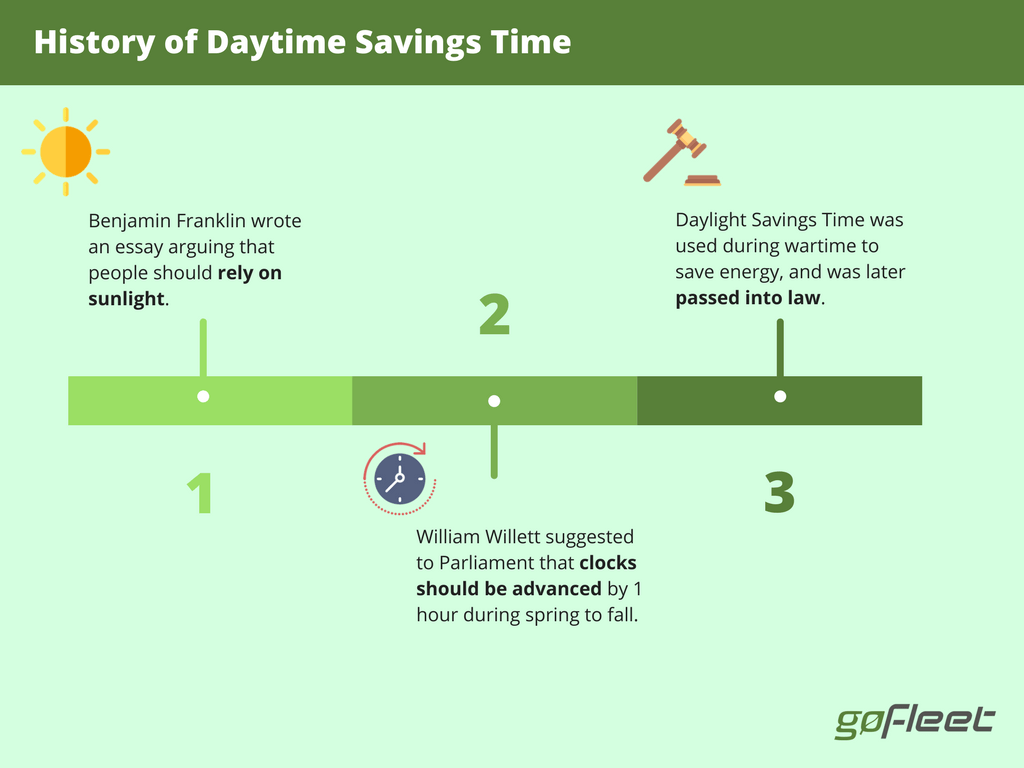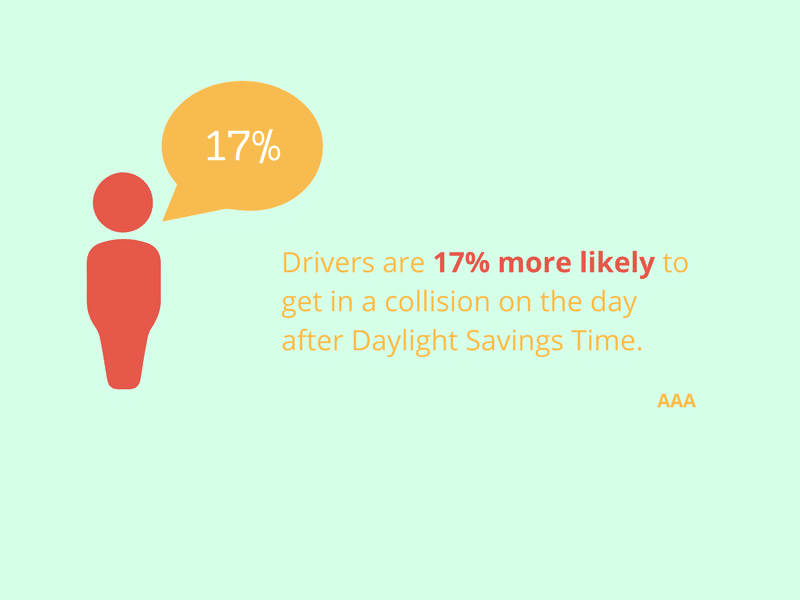Managing Driving Fatigue Around Daylight Savings Time
Recently, the clocks sprang forward for Daylight Savings Time. Although people enjoy more sunlight in the evening, fleet safety managers are concerned about managing driver fatigue. According to studies, people are 17% more likely to get in an accident on the Monday after the time change.
Of course, that doesn’t Daylight Savings Time is an awful idea! Let’s explore the history of daylight savings time and discuss managing driver fatigue.
History of Daylight Savings Time
Who thought of Daylight Savings Time? Daylight Savings Time has hundreds of years of history.
Benjamin Franklin
Benjamin Franklin was one of the thought leaders for Daylight Savings Time – he strongly believed that people should rely on sunlight rather than candles. Franklin then published an essay where he summarized that the economy could save millions of dollars with sunlight.
William Willett
While Franklin thought about maximizing sunlight, Willett was the one who suggested an actual time change. One day, Willett realized that people can get more sunlight by advancing clocks by an hour between spring and fall.Year after year, the British parliament mulled over Willett’s idea.
Wartime & Afterwards
Daylights Savings did not take place until the First World War, where countries needed to save energy. It was actually Germany who first used Daylight Savings. England and the Allies soon followed suit.
After the war, some cities continued using Daylight Savings Time. Eventually, governments realized that it made more sense for everyone to have Daylight Savings Time and passed a law to do so. Today, about 40% of places use Daylight Savings Time!
Daylight Savings & Road Safety
Road safety was perhaps something Franklin and Willett didn’t consider. Cars, after all, were not popularized until the 1900s!
Daylight Savings Time affects road safety because:
Driver fatigue. Losing an hour is bad news for sleep lovers! In addition to the lost hour, most people find it hard to force themselves to sleep earlier. Of course, by losing sleep, people have reduced physical and mental ability in the morning.
Visibility. While Daylight Savings mean longer evenings, it also means darker morning drives. Early March is always a tease; before Daylight Savings Time, people get a preview of bright mornings but are then treated to a dark morning after Daylight Savings Time kicks in!
Managing Driver Fatigue
Drivers and fleets both have a role in managing driver fatigue.
Drivers
People can reduce fatigue by managing their sleeping schedules. Some of the top tips include:
7 Day Adjustment
The National Sleep Foundation recommends using an entire week to prepare for Daylight Savings. Each day, people should sleep 10 minutes earlier than the day before. As a result, an entire hour is made up by the week’s end.
Bedtime Ritual
Another tip is to work on a bedtime ritual. Some rituals such as avoiding electronics or food before sleep should be universal. Other rituals depend on the person. For example, I sometimes play light instrumental music to help me fall asleep.
Fleets
Driver supervisors are also taking charge of managing driver fatigue.
Case Study: Driver Fatigue Detection
Some fleets use driver fatigue detection sensors. Fatigue detection sensors scan a driver’s facial structure to measure their fatigue. During the Daylight Savings Time switch, some managers took a positive spin by using fatigue sensors to identify and reward alert drivers!
Click here to learn more about the Dangers of Driver Fatigue!


